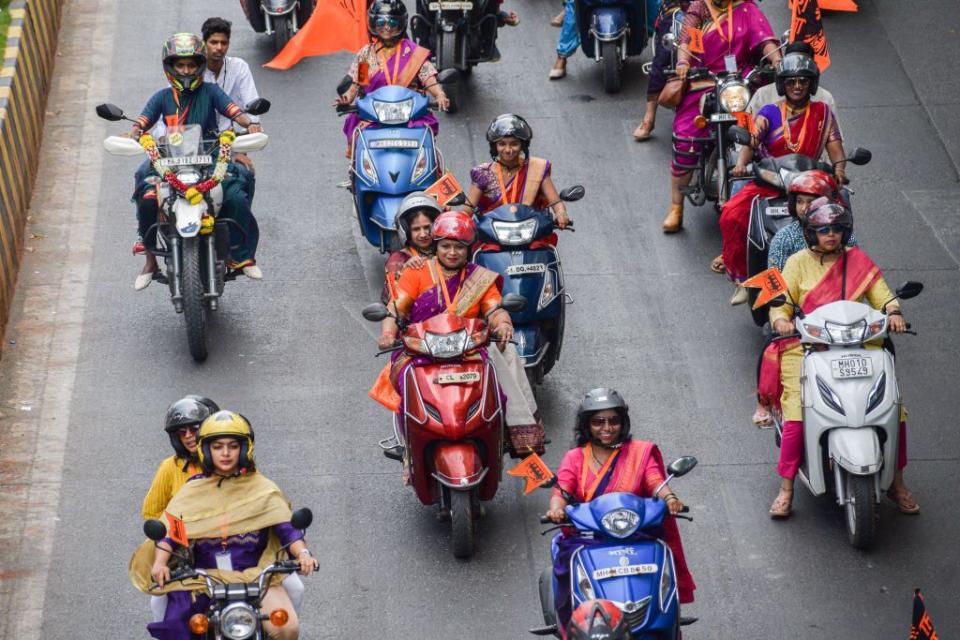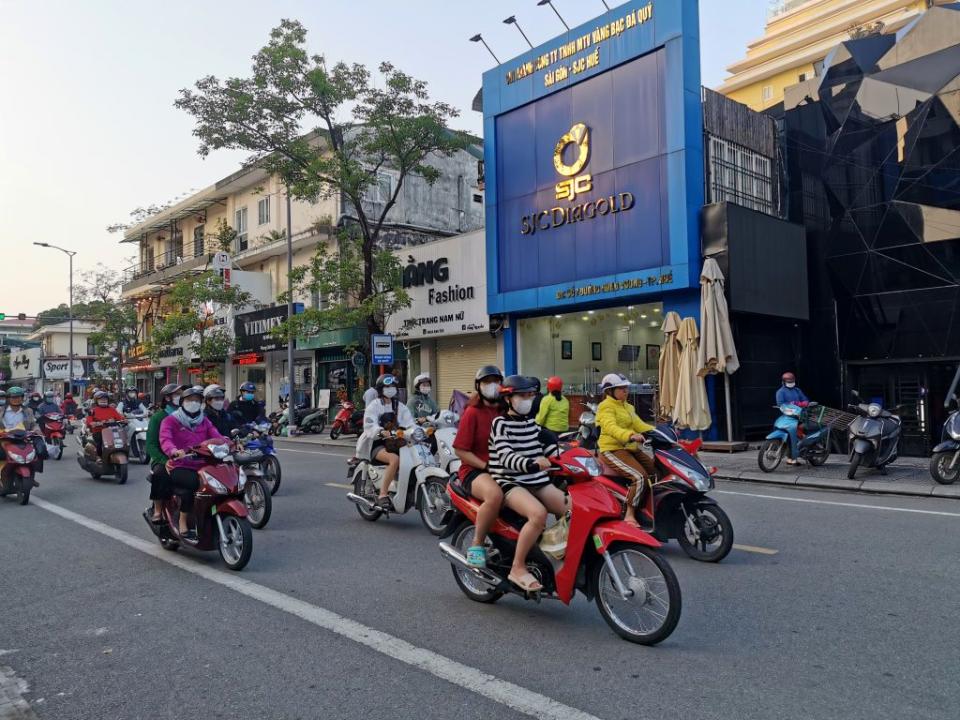The World Health Organization Says Wear a Motorcycle Helmet—Please

Motorcycling isn't the safest way to get around, but there are ways to mitigate your risk with the right safety gear, according to the World Health Organization.
Head injuries are the most common motorcycle-related injury worldwide, and wearing a well-fitting helmet can reduce your risk of brain injury by up to 74%, the WHO says.
Increasing helmet usage will require greater affordability, a combination of rider education and helmet-law enforcement, as well as region-specific regulations.
Back in 2006, the World Health Organization penned a study called the Helmet Road Safety Manual, in which it described the function of motorcycle and bicycle helmet usage across the globe and discussed the health effects of choosing to not wear a helmet. In the 17 years since the initial article was published, both bicycling and motorcycling enthusiasm initially fell but are now seeing strong industry and consumer growth, particularly in the last three years. However, with more two wheeled-vehicles on the road and traffic fatalities on the rise worldwide, the WHO has released its second edition of the Helmet Road Safety Manual, complete with analysis and advice for modern motorcyclists around the world.

Globally, the WHO says that powered-two-wheel fatalities account for about 28% of roadway fatalities annually, which isn't statistically concerning considering motorcycles make up about 30% of vehicles worldwide, according to research from the Metropolitan Institute of Technology in Medellin, Colombia. But these big-picture statistics don't show the details of where motorcycles are used the most and how crash statistics vary by country and region. Given the sheer size of our planet and the differing transportation roles that motorcycles play around the world, the statistics vary widely by country, though these differences were essential to the WHO in mapping out a way forward for each region.
For example, head injuries are the most common injury type for motorcyclists, but the statistics differ significantly by region. While Kenya reports 42% of motorcycle crashes as head-injury inducing, Taiwan reports 82% of head injuries as associated with road traffic crashes, 71% of which directly involved motorcycle riders. In the US, around 37% of fatal motorcycle crashes are traumatic brain injury related.

These are bleak numbers that represent more than a percentage point in government injury charts, but rather people who ride for fun, work, or even out of necessity. However, the WHO says there is a simple way to reduce these numbers—by wearing a helmet. And this helmet recommendation actually does have different meanings depending on the region at hand.
To start, the WHO explains that there are a few key reasons why riders don't currently wear helmets; affordability, hot weather, misinformation, and inadequate enforcement of existing helmet laws. High-quality motorcycle helmets are rather expensive and even well-fitted helmets aren't terribly comfortable, especially on a steamy day. Additionally, a long history of misinformation about EPS foam helmets has exacerbated a lack of helmet use, especially in helmet-lawless states in America.
In spite of these challenges, wearing a properly fastened, full-face helmet results in an estimated 28-64% chance reduction for fatal injuries and a 47-74% chance reduction for brain injuries. These percentages were calculated through analysis of real crash data, not computer simulations. Additionally, increased education around helmet-wearing combined with mandatory helmet laws for motorcyclists has shown promising results.
In reviewing helmet law studies from the US, the WHO found that it increased helmet wearing by 47% with similar laws in Australia, Malaysia, China, Thailand, and Vietnam showing increased helmet wearing regardless of income level. Planning this legislation rollout with a public supply of helmets was essential to its success, the study found.

In some cases, just passing a helmet law isn't enough, as a comparison between helmet laws and seatbelt laws found that these rules can be easy to ignore. To increase awareness, the WHO says a blend of education and enforcement is needed, with this blended approach increasing helmet wearing by around 12 times greater than just education alone. Mass media campaigns also need to run for more than a year to embed in riders' brains, while shorter campaigns are generally ineffective.
Finally, there is some merit to the idea of tropical weather-specific helmets. Motorcycles are the vehicle of choice in many Latin American and Asian countries, some of which have, particularly warm climates. As a result, Vietnam has devised its own set of regulations around helmet wearing, which subscribe to an international safety standard while carving out an exception for helmets with ventilation holes.
The WHO acknowledged that motorcycle and scooter ridership is growly rapidly, which is likely to lead to an uptick in injuries and deaths. The growth of ridership in the US over the last three has mirrored two of the deadliest years (2020 and 2021) in motorcycling history since 1975, the National Highway Traffic Safety Administration says. But that doesn't mean riders, new and seasoned alike, are out of options to improve their own safety and roadway safety as a whole.
"Though measures for increasing and sustaining helmet use are known, their implementation faces several challenges such as inadequate enforcement, persistent use of poor-quality helmets...," the WHO reports read. "Identifying and leveraging opportunities for advancing helmet use interventions is necessary for decision-makers and practitioners who work on safe mobility, sustainable development, and the Decade of Action for Road Safety 2021–2030."

 Yahoo Autos
Yahoo Autos 